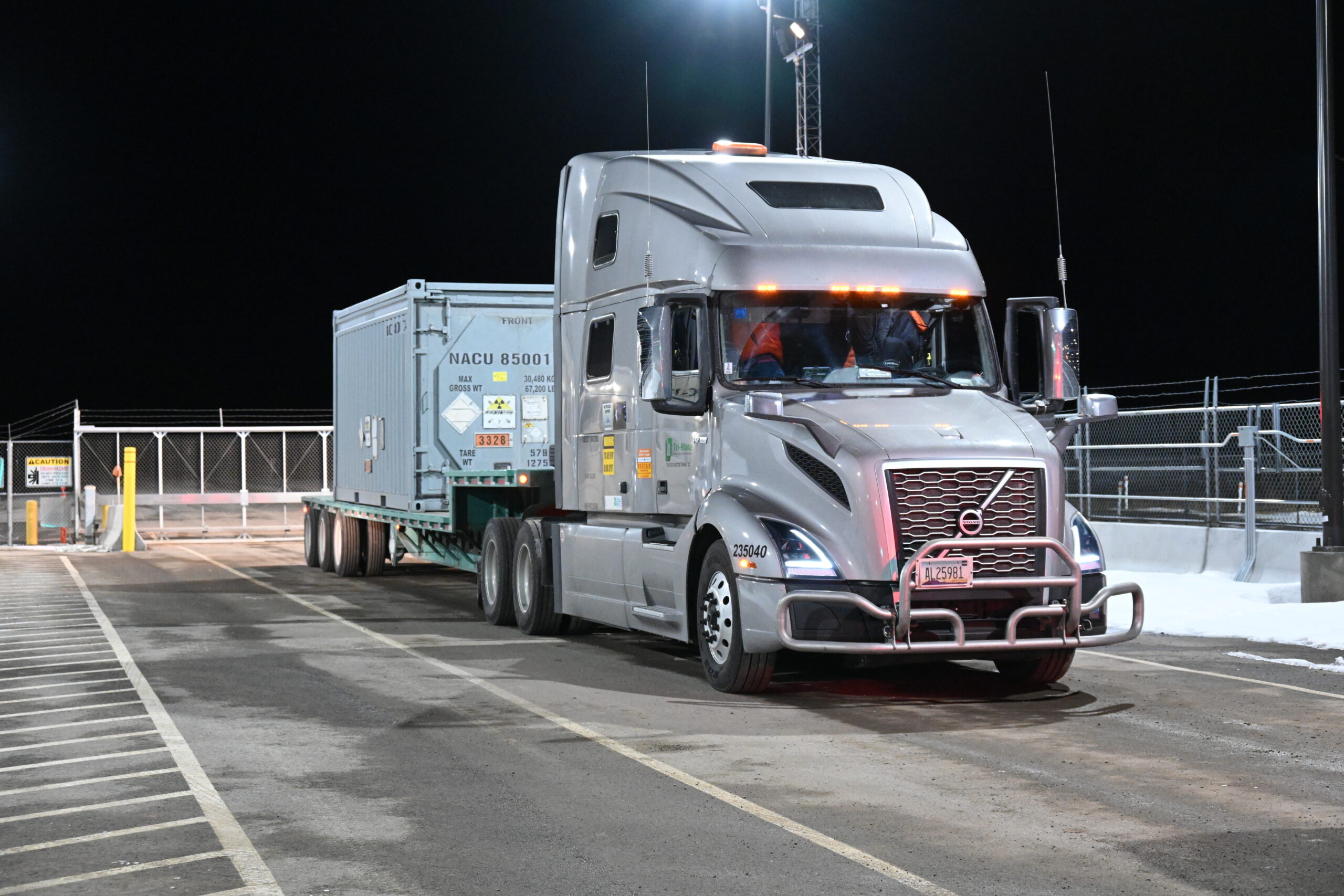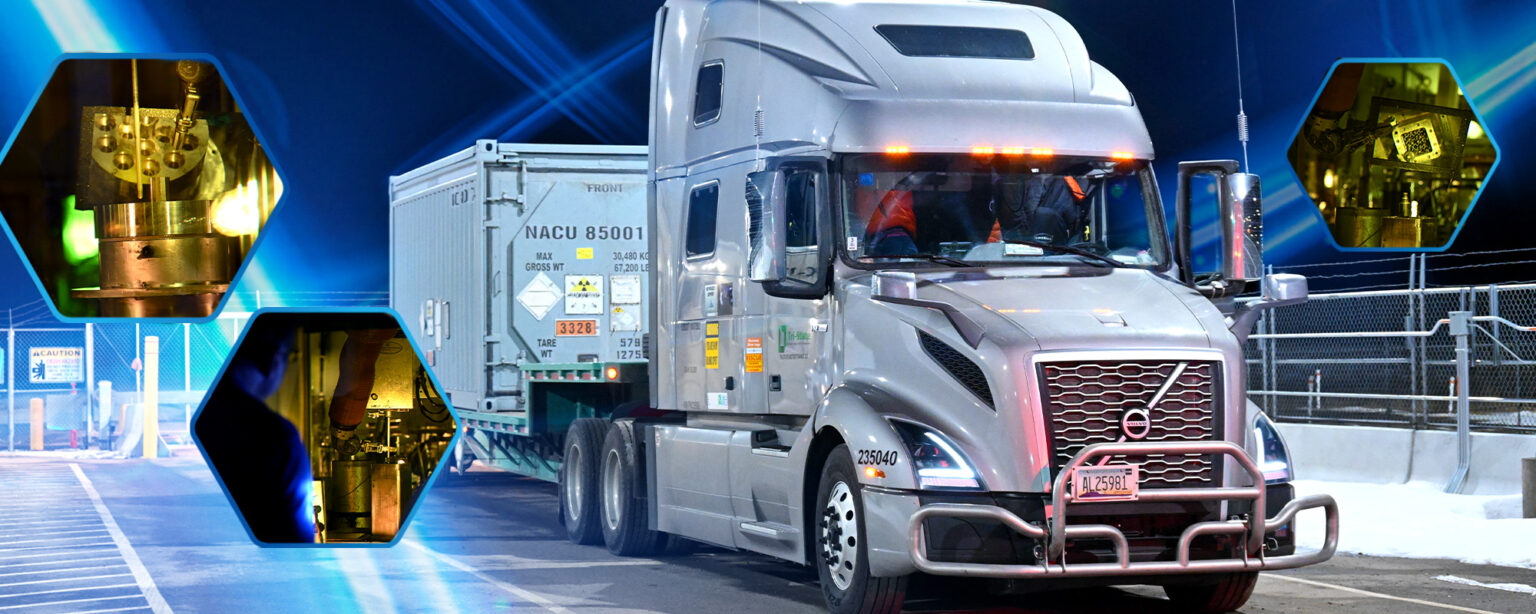For the first time in two decades, Idaho National Laboratory, the nation’s nuclear energy laboratory, has received a shipment of used next-generation light water reactor fuel from a commercial nuclear power plant to support research and testing.
In December, INL received 25 experimental fuel rods irradiated in the reactor core of a commercial reactor. The fuel rods were developed and manufactured by Westinghouse Electric Company with technical assistance from several national laboratories, including INL.
These experimental fuels, designed for extended use and robust safety features, could deliver significant cost savings for consumers while increasing a nuclear power plant’s resilience under potential accident conditions.
But first, researchers must examine and analyze the fuel to evaluate how this advanced technology performed during normal usage. Researchers will conduct additional experiments to understand how the fuel performs under postulated accident conditions. Lastly, researchers will perform experiments to demonstrate behavior during storage and recycling.
The data generated from these experiments and analyses are essential to establishing the safety bases required by the Nuclear Regulatory Commission to allow the fuel’s use at more nuclear power plants throughout the U.S.
“Continuous innovation is key to improving the nuclear sector’s reliability, especially at a time when energy demand is increasing and nuclear’s role is more vital than ever,” said Tarik Choho, Westinghouse president of Nuclear Fuel. “Westinghouse is proud to join efforts with INL and other partners in the production and testing of these advanced nuclear fuels.”
Each fuel rod is 12 feet long, and the total shipment of 25 rods contains about 100 pounds of heavy metal, mostly uranium.

The fuel rod shipment contains both accident tolerant fuel (ATF) and high burnup fuel. Industry and DOE have collaborated over the last decade to design accident tolerant fuels that offer enhanced safety performance during normal operations, mild operational transients and accident scenarios. High burnup fuels take advantage of unrealized performance capacity available in advanced materials that can allow for extended operating cycles and/or increasing the licensed power generation at existing power plants while significantly reducing spent fuel generation.
Researchers say the new fuel rods, when licensed for commercial use, could extend the amount of time a plant can operate between refueling from 18 to 24 months.
“Increased burnup, when combined with potential ATF-related uprates, could be a huge economic benefit to those plants and the fleet,” said Daniel Wachs, national technical director of DOE’s Advanced Fuels Campaign. “The increased electrical output in the U.S. could be the equivalent of adding new reactors to the fleet.”
Westinghouse and other nuclear fuel developers, in concert with national laboratories, have spent years developing new fuels for the existing nuclear reactor fleet. INL’s experiments and examinations of the fuel after time spent in a commercial nuclear reactor is one step in the qualification process.
“We wouldn’t be able to get across the finish line with these technologies if we couldn’t examine the rods,” said David Kamerman, a nuclear fuel research and development engineer at INL. “It’s a really big deal. There are not many places in the world that can do the work, and none of them match the capability of Idaho National Laboratory.”
Experts will analyze and test the fuel at INL’s Materials and Fuels Complex. There, experts will use remote manipulators in the nation’s largest inert-atmosphere hot cell to perform analyses and tests. Researchers will also subject the fuels to safety tests — simulations of power excursions or loss-of-cooling events in a controlled environment that are designed to push the fuel to its breaking points and beyond.
“Safety testing for fuels is like crash testing for your car,” said Fabiola Cappia, the post irradiation examination department manager at INL. “You push it to the limit and beyond.”
INL is also preparing the Advanced Test Reactor to accommodate fuels for endurance tests that mimic the wear and tear incurred over a decade of service in a commercial reactor in a fraction of the time. This step can support pursuing even higher burnup than that achieved in the commercial plant testing.
Experts will also use the material to explore used fuel management approaches. The material will be examined to measure thermal and mechanical properties, data that is essential for understanding transportation and dry storage behavior. This work also includes demonstrating electrochemical recycling technologies as an option to recover and recycle valuable uranium and other fissile isotopes.
The research will provide valuable data for not only the NRC and INL’s domestic sponsors including the DOE Office of Nuclear Energy, the National Nuclear Security Administration and private entities, but also international partners including regulatory bodies in other parts of the World.
The commercial fuel shipment underscores INL’s leadership in a broad array of nuclear energy research, development and demonstration programs, said John Wagner, INL director.
“Receiving these fuel rods is a significant milestone for INL and the nuclear energy industry. As the nation’s nuclear energy research and development center, we possess the unique facilities, capabilities and expertise to perform this vital research,” Wagner said. “Completion of this shipment, along with the state of Idaho’s reinstatement of the Department of Energy’s ability to receive up to 400 kilograms of commercial spent nuclear fuel per year at INL for research and development purposes, send a strong message that we are once again open for business. This has been a long time coming and I genuinely appreciate the state’s ongoing engagement with DOE to enable this critical work.”
INL News Release
FOR IMMEDIATE RELEASE
Jan. 25, 2024
NEWS MEDIA CONTACTS:
Joel Hiller, 801-597-6030, [email protected]
Sarah Neumann, 208-520-1651, [email protected]







